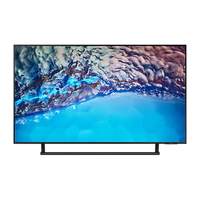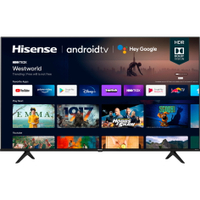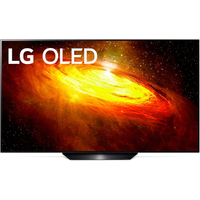TechRadar Verdict
The Samsung AU9000 TV is proof at just how accomplished Samsung has become at developing and delivering high-performance TVs at realistic prices. The AU9000 delivers on that promise with good images and gaming features – even if it is now more than a year old.
Pros
- +
Composed, convincing 4K images
- +
Fine interface
- +
Good gaming features
Cons
- -
Humdrum sound
- -
Not overly bright
- -
No Dolby Vision
Why you can trust TechRadar
One minute review
The Samsung AU9000 TV has its flaws. During testing, we were struck by its lack of out-and-out brightness at times. Sound can sometimes be a bit vague and there are visible difficulties when it comes to upscaling low-resolution content. But most of the time, you’ll just sit and revel in the brilliantly accomplished image from a screen that’s far more slender than you might have imagined.
Samsung has been a major player in the mainstream TV market for a long time. Yet the AU9000 still seems like a remarkable achievement for its price, which is why it’s still one of our top picks of the best TVs you can buy for under £1000 more than a year after it was first released.
Design-wise, it’s a remarkably slender device, which is operated using one of the leading smart TV interfaces, it has generous specs – including HDR10+ advanced HDR, as well as Samsung’s Tizen smart TV interface – and delivers outstanding pictures.
It’s not perfect at such a low price: sound is the very definition of ‘dull’ and it can act up when asked to do a big upscaling job. Take a look at our best Samsung TVs guide for our top recommendations. The Samsung BU8500 is certainly an alternative to consider, this newer TV is also fairly affordable and offers a great 4K picture performance and a slim design. If you’re not wedded to Samsung, read our roundup of the best TVs you can buy right now.
But with the AU9000, Samsung has created a TV that looks, both physically and in terms of its picture quality, considerably more expensive than it actually is. Read on for our full Samsung AU9000 TV review.
Samsung AU9000 TV review: price and availability
- The 50-inch model is currently priced at £699
- Looks and feels more expensive than it is
The Samsung AU9000 TV is available in 43-inch, 50-inch, 55-inch, 65-inch and 75-inch sizes.
The 50-inch model reviewed here launched at £699 in the UK. With its range of screen sizes and mid-range price, this is a TV with wide appeal.
What's more, like several Samsung TV models also released in 2021, it's regularly reduced on the Samsung website and on other retailer websites. Which should make it an even more attractive option.
Its price makes it more expensive than the cheapest Samsung QLED, which you can look at in our Samsung Q60T TV review. But cheaper than other Samsung QLEDS, check out our Samsung Q70T QLED TV review for a step up in price and performance.
We'd consider the Samsung AU9000 TV a mid-range option, although it's excellent value for money, so is definitely on the lower end of the scale. It's actually the same price as the more recently-released Samsung BU8500, which we'd recommend as a newer alternative to most people.
TV type: LED
Sizes: 43, 50, 55, 65, 75 inches
Resolution: 3,840 x 2,160
HDMI: 3
Features: HDR10+ support, HLG, UHD Dimming, Dolby Digital Plus, Bixby
In the United States, you should expect to pay around $969. That’s based purely on exchange rates, of course. Samsung likes to alter model numbers for different territories and months after launch in the UK, we don't see signs of a release beyond UK and European markets.
The same calculation gives an Australian price of AU$1259. It’s not uncommon for Australian consumers to find European products disproportionately expensive but, equally, Korean brands like Samsung are able to keep Australian prices competitive. If and when Samsung confirms this television’s model number for the Australian market, we’ll be able to update this information.
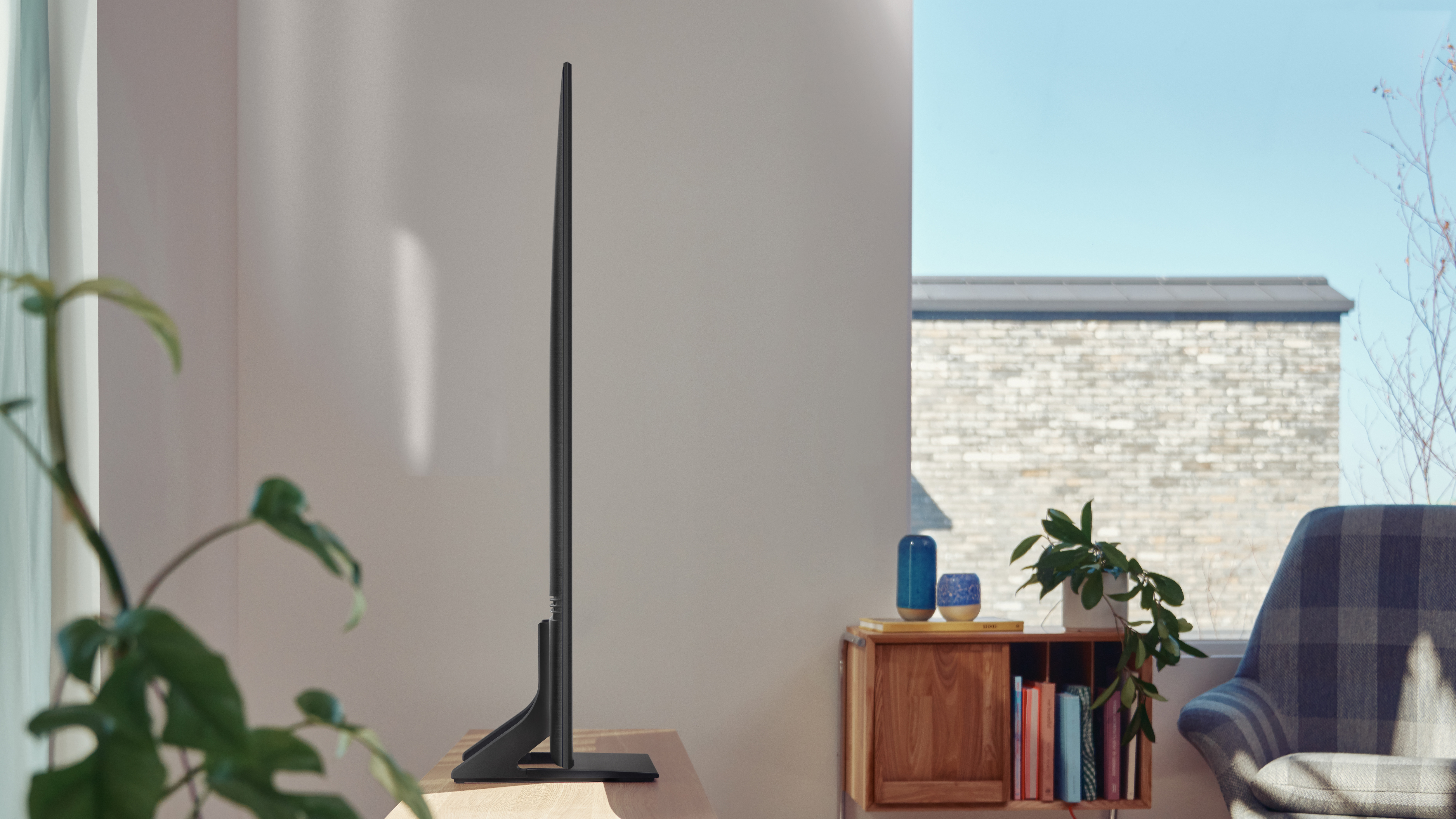
Samsung AU9000 TV review: design
- Startlingly slim chassis
- Anonymous-in-a-good-way aesthetics
- Simple feet incorporate simple cable-management
We all expect a certain degree of sophistication from Samsung’s television designs – even when the television in question is a midrange, mainstream volume seller. And sure enough, the Samsung AU9000 TV is an elegant and understated looker – and, when viewed in profile, it's remarkably slender.
It’s the final figure in the Samsung’s 1119 x 645 x 26mm (h x w x d) measurements that’s the most arresting. That depth is consistent, too – so if you decide to wall-mount your TV, it’ll sit almost flush. Samsung, with no apparent sense of hyperbole, calls this design language ‘AirSlim’.
If you’d rather put it on a shelf or table-top, though, it’s supplied with a couple of unremarkable push-and-click feet. They have a little cable management in their rear portions, too, which is useful as long as your cables aren’t too expensive and chunky.
From the front, the Samsung AU9000 TV looks clean enough. The bezel is minimal around the top and sides – and even if the bottom portion is both a bit heftier and doesn’t join the main frame seamlessly at either end, that’s the sort of thing you notice while installing the screen and then never give another thought to. The plastics feel nice enough, even on the rear panel, and as is usual with Samsung there’s an impression of quality construction.
At the rear of the screen there are three HDMI inputs (one of which is eARC-enabled, and all three of which cover the ALLM and FreeSync aspects of HDMI 2.1 specification). Further physical connectivity is present in the form of an Ethernet socket, a couple of USB 2.0 inputs, a CI slot and an aerial post for the terrestrial TV tuner. There’s a digital optical output too, for use with legacy soundbars and so on. Wireless connectivity is present in the shape of dual-band wi-fi and Bluetooth 5.2.
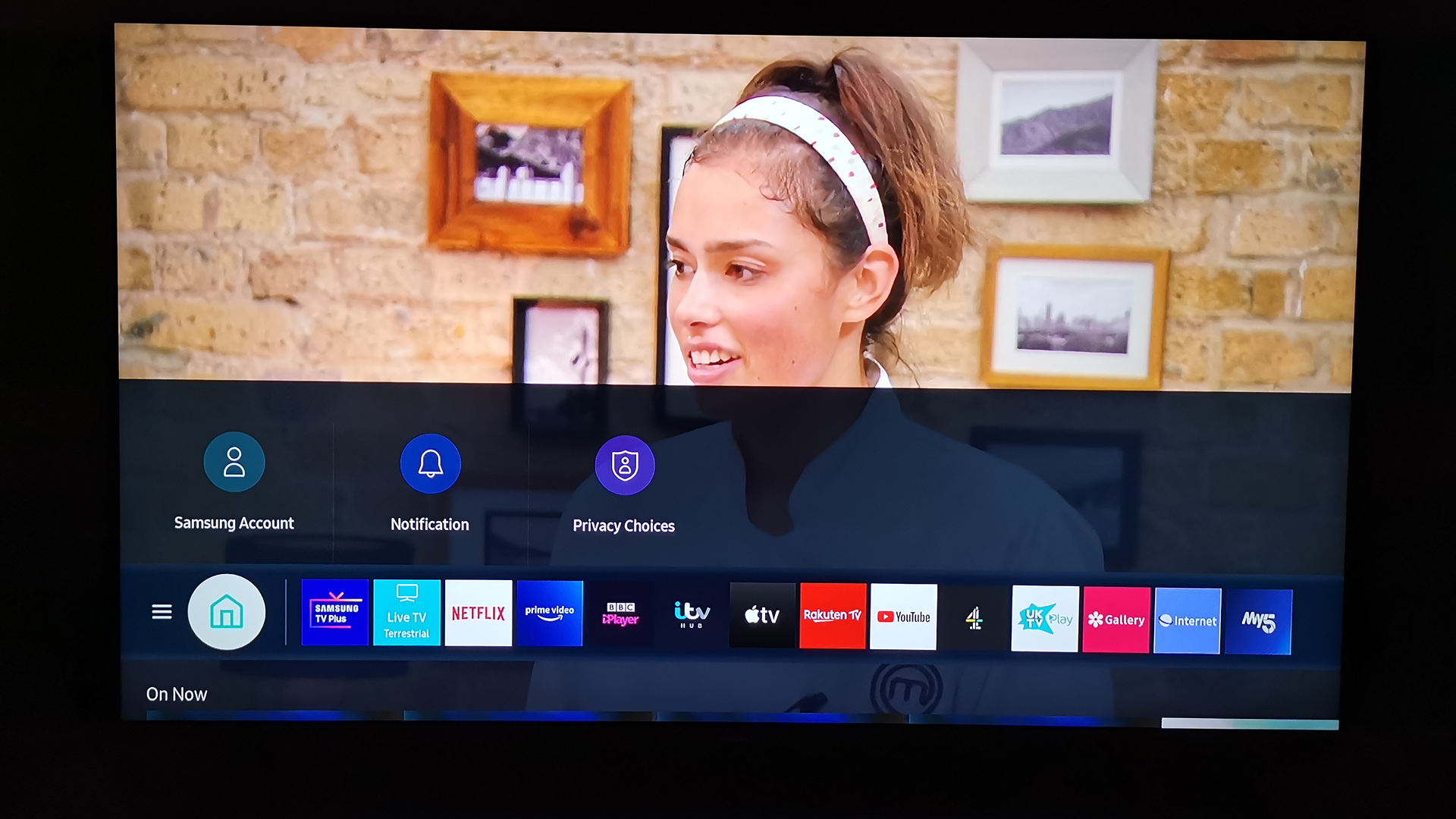
Samsung AU9000 TV review: smart interface
- Two remote controls
- Compatible with Samsung’s Smart Things app
- Impressive Tizen smart TV interface
For quite a while, Samsung’s Tizen smart TV interface was obviously and unarguably the best around. In fact, it’s a measure of just how good it is that it remains one of the best interfaces currently available, despite everyone from LG to Hisense upping their smart TV game in response. The Tizen interface incorporated into the AU9000 is clean, logical, comprehensive and a straightforward pleasure to use.
The available content is extensive, with all the worthwhile apps (and plenty that aren’t quite so worthwhile, too) on board. There’s no Freeview Play, admittedly, but every UK broadcaster’s catch-up service is available, alongside the likes of Netflix, Amazon Prime Video, Disney Plus and Apple TV – so whether you subscribe to streaming services or not, you shouldn’t be short of content to watch. And thanks to that Tizen interface, you shouldn’t struggle to find it, either.
Set-up menus are similarly logical, and strike a nice balance between brevity and comprehensiveness. Achieving a picture that scrolls smoothly, defines edges confidently, and is decently bright and detailed, shouldn’t take long. Getting a colour balance you’re convinced by may take just a little longer.
Both remote control handsets are eminently usable. The full-function wand is rather more prosaic in the way it looks and feels, admittedly, and some buttons feel a bit too compact. The stripped-back ‘major functions’ alternative is nicer to hold and use, and will likely be the default choice for most.
That’s unless you want to use Samsung’s Smart Things control app, at least. It’s a clean interface, and performs stably – but it’s quite nosy. Short of inside leg measurement, there’s very little it doesn’t want to know about you, which some folks are guaranteed to find off-putting.
Voice-control is available too. Unsurprisingly Siri isn’t available, but Amazon Alexa and Google Assistant both are. For the deeply obtuse (or for Samsung employees), Bixby voice assistance is available too.
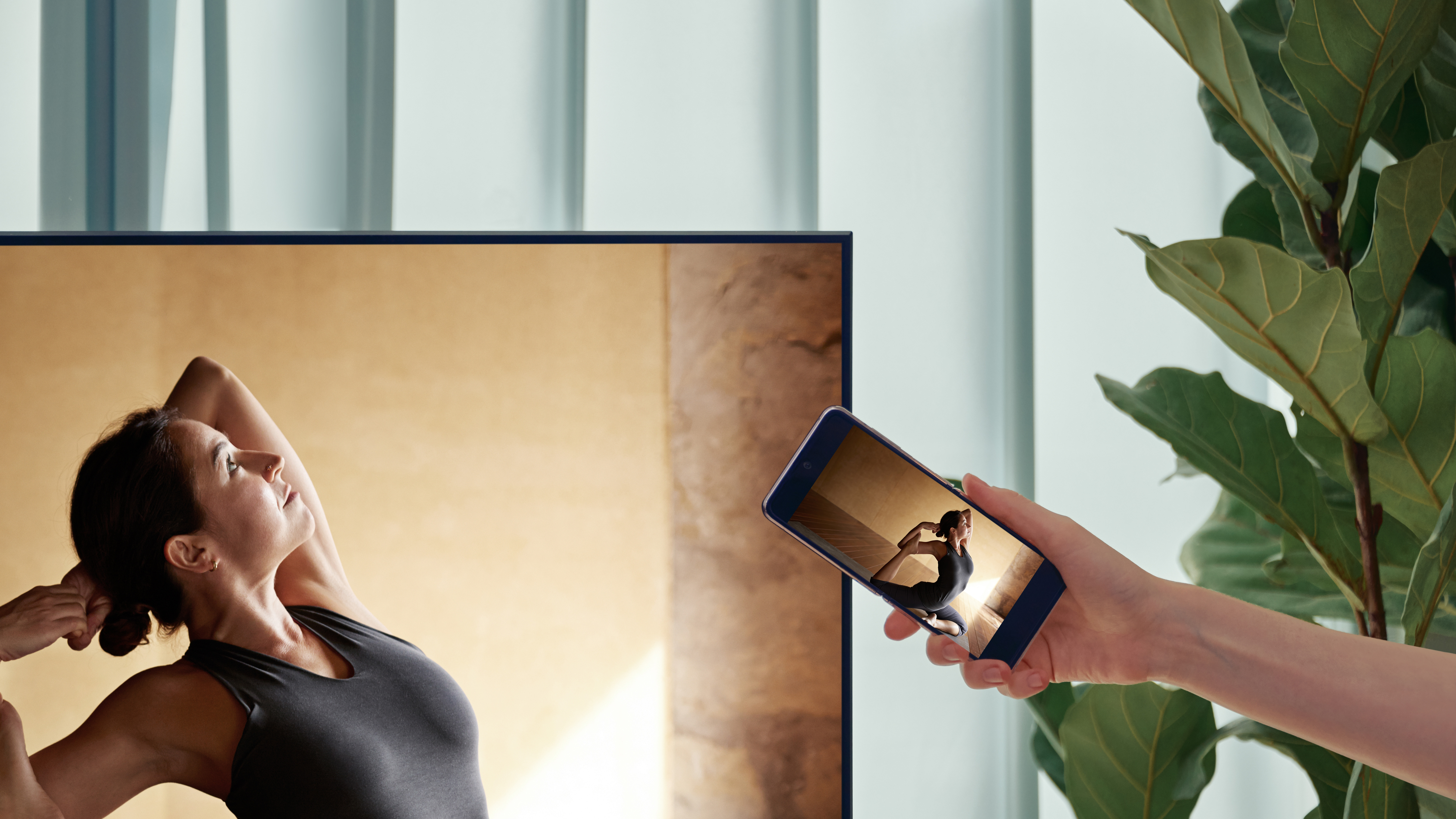
Samsung AU9000 TV review: picture performance
- Composed, convincing 4K images
- Halfway to making sense for gamers
- No Dolby Vision: unsurprising, still disappointing
If you’re intending to see the Samsung AU9000 TV perform at its best, then you’ll need to serve it some native 4K content with HDR10+ augmentation – because, as is always the case (and as is always galling) with Samsung, there’s no Dolby Vision dynamic metadata HDR standard on the spec-sheet.
Still, a 4K HDR10+ disc of the impeccable remaster of Kubrick’s The Shining turns out to be the right stuff – and when given the best chance, this Samsung proves an absorbing and accomplished watch.
When written down, edge-lit backlighting and peak brightness of less than 350 nits doesn’t look all that promising in terms of contrast or visual dynamism – but the Samsung outperforms that on-paper specification quite comfortably.
There’s decent depth to black tones, and they’re very acceptably detailed at the same time – but what’s even more impressive is the variation and smooth gradation of black shades. Backlighting control is confident too, and even the darkest scenes with minimal lighting resist significant blooming or haloing.
While white tones hardly pop from the screen, they’re clean and equally detailed – so while contrasts are far from the widest you’ve ever seen (even at this unremarkable price-point), they’re convincing nevertheless.
The colour palette, too, is naturalistic and wide-ranging. Skin-tones are convincing, with more than enough fine detail carried over to make the subtleties of a complexion obvious. Kubrick’s trademark primary tones, such as the bright red of the Gold Room lavatories in the Overlook Hotel, are dynamic without being in any way over-driven, while the less glaring tones in the reception area are muted without being dull.
The Samsung AU9000 TV draws a nice smooth edge, keeping a lid on shimmering or doubling of images even when the on-screen motion gets properly testing. One of the trickiest moments of all, right at the start of the film (an airborne camera follows a car up a mountain road from way overhead, while slim blue text scrolls from the bottom to the top of the screen) is handled with real competence – there’s not quite the buttery smoothness that some of Samsung’s pricier televisions will treat you to, but it’s not as if the AU9000 will have you howling with frustration.
Thanks to its Crystal Processor 4K, the Samsung’s also a very adept upscaler of lower-resolution content. Certainly the endless colours and textures of the BBC’s The Great British Sewing Bee enjoy worthwhile variation, and contrasts stay clean and obvious too. There’s a little hesitancy when it comes to edge definition and motion control, but it’s minor enough to be easily ignored. Step down in source quality from there, though, and the results are predictable – softness of image, hesitancy of motion, significant lack of detail. Any 4K TV would struggle with a daytime TV repeat of Murder, She Wrote and the 50AU9000 is no exception.
As far as gaming goes, the news is at least partially good. Each of the Samsung’s three HDMI inputs can cope with the Auto Low Latency Mode and FreeSync aspects of a next-gen console’s specification – latency is down below 10m/s at worst and sub-6.0m/s at best. Add in some complicated processing that intends to mimic a 4K/120Hz refresh rate, and the ability to accommodate the 32:9 aspect ratio some PC games are so enamoured of, and the AU9000 isn’t a bad gaming companion at all.
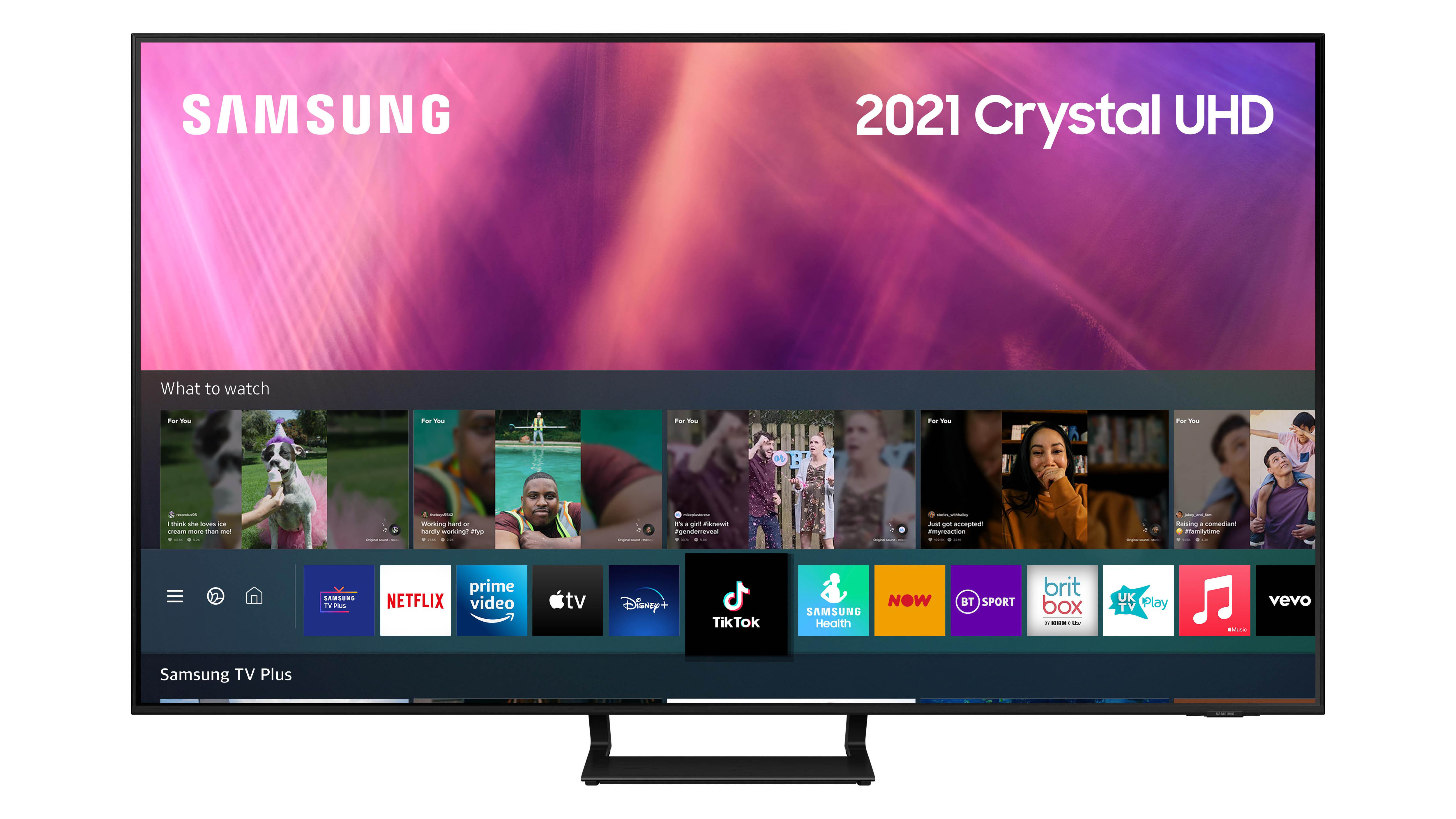
Samsung AU9000 TV review: audio performance
- Humdrum sound
- Two drivers totalling 20 watts of power
- Q-Symphony compatible
It’s not uncommon for a mainstream TV to betray its price-point more readily with the sound it makes than with the images it produces. And so it proves with the Samsung AU9000 TV.
Samsung’s not very forthcoming about the size and composition of the two drivers fitted to the lower apportion of the screen. It’s prepared to admit they enjoy a total of 20 watts of power, though. And it’s happy to suggest its ‘Object Tracking Lite’ algorithms can coax a meaningful impression of height out of the audio presentation too.
It’s fair to say this last part is a red herring. The point-source of sound from the Samsung is hazy, certainly, but that’s not the same as delivering an impression of height – not at all. And as far as tonality goes, the 50AU9000 sounds tentative and rather flat. It’s game, certainly – wind the volume upwards and it resists hardening or coarsening quite commendably. But really, it’s as far removed from the standard of the images the Samsung produces as these things ever are.
So not for the first time, we find ourselves strongly pushing the idea of a soundbar to bring your sonic presentation up to snuff. Given that the AU9000 is ready to contribute to a ‘Q Symphony’ arrangement with an appropriate Samsung soundbar – that’s when the TV’s speakers join in with, rather than are muted by, an attached soundbar, we’d particularly suggest looking into that option. But in any event, try and keep a little of your budget aside – an inexpensive soundbar is the least these images deserve.
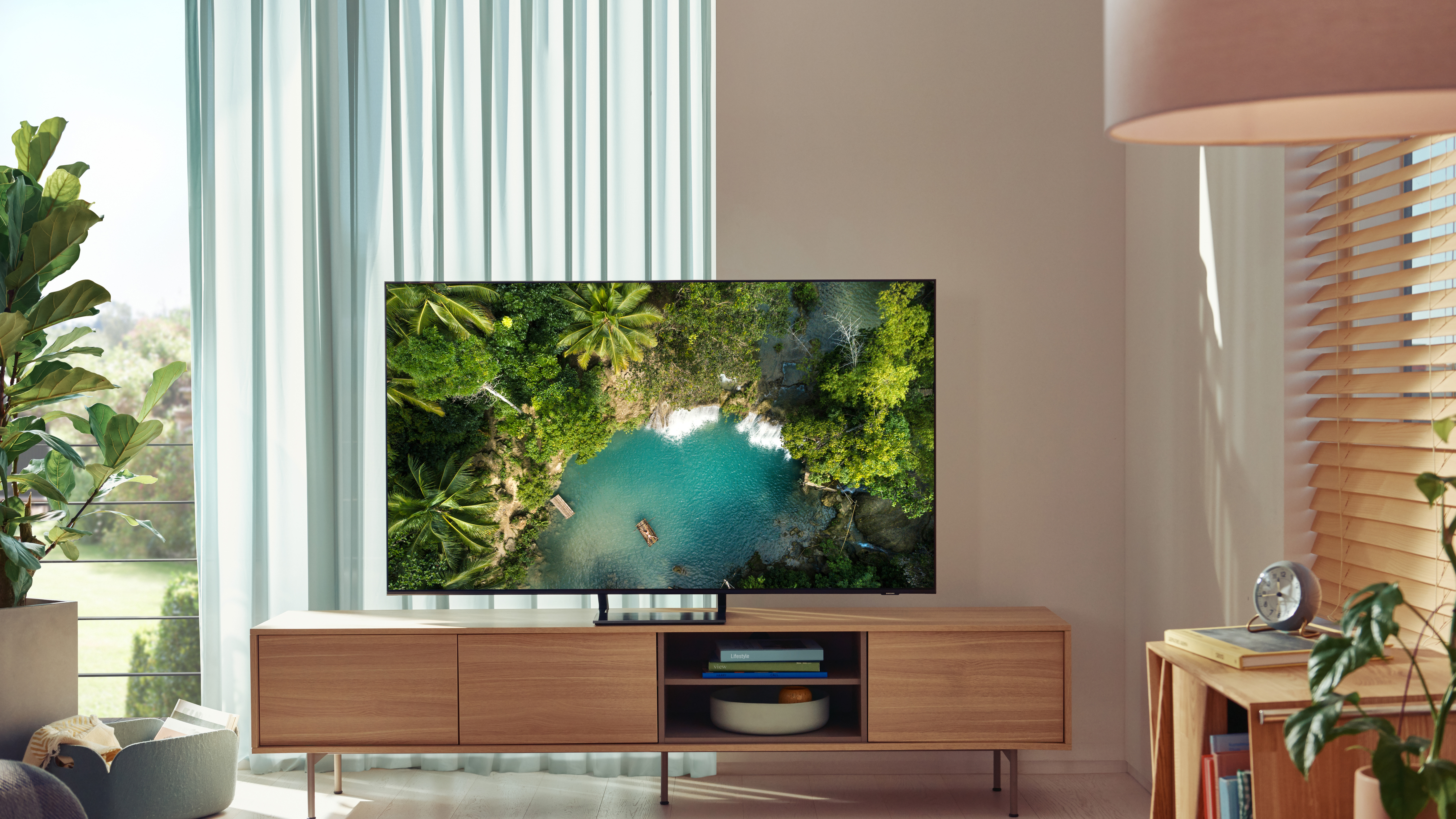
Conclusion
If you want to make the most of your budget, Samsung’s long had a handle on what makes a great mid-range TV, and the AU9000 is no exception. What's more, this TV is often reduced by at least 10 percent on the Samsung website and other retailer websites, making it fantastic value for money.
We'd particularly recommend it if you're keen to hang it on a wall, as it's incredibly slim. However, it'll only meet you halfway in terms of gaming capabilities with three HDMI ports and capable sub-10ms input lag. It also has some upscaling ability but it’s no miracle-worker, which means SD content will predictably struggle here.
Also consider:
If our Samsung AU9000 TV review has you considering other alternatives, here are three more TVs to take a look at.
Samsung BU8500 (55BU8500)
The Samsung BU8500 is a very nice TV indeed when you balance the price, specification and screen-size ratio. It gives you comprehensive smart TV support and great 4K picture quality for the same price as the AU9000.
Read more from our Samsung BU8500 review
Hisense A6G 4K HDR TV (55A6G)
If you're on a strict budget and need an even cheaper alternative, consider the A6G from Hisense. It boasts many of the same specs as the Samsung AU9000, looks similar and also includes Dolby Vision. However, at more than £100 cheaper, it's not as accomplished in terms of picture quality or gaming – it's a budget TV through and through.
Read more from our Hisense A6G 4K HDR TV (55A6G) review
LG BX OLED TV
Another of our top picks for the best TVs under £1000 is the LG BX OLED TV. This is one of the few OLED TVs you'll get for sub £1000 prices, and you'll likely find it discounted these days, too. It has a lower-spec processor compared to some LG TVs, which isn't as capable for dark scenes, leading to some video noise – but the overall experience is still fantastic and it's a solid choice if you want a great looking but cheaper alternative to the AU9000.
Read more from our LG BX OLED TV review
- First reviewed 2021.
Simon Lucas is a senior editorial professional with deep experience of print/digital publishing and the consumer electronics landscape. Based in Brighton, Simon worked at TechRadar's sister site What HiFi? for a number of years, as both a features editor and a digital editor, before embarking on a career in freelance consultancy, content creation, and journalism for some of the biggest brands and publications in the world.
With enormous expertise in all things home entertainment, Simon reviews everything from turntables to soundbars for TechRadar, and also likes to dip his toes into longform features and buying guides. His bylines include GQ, The Guardian, Hi-Fi+, Metro, The Observer, Pocket Lint, Shortlist, Stuff T3, Tom's Guide, Trusted Reviews, and more.
